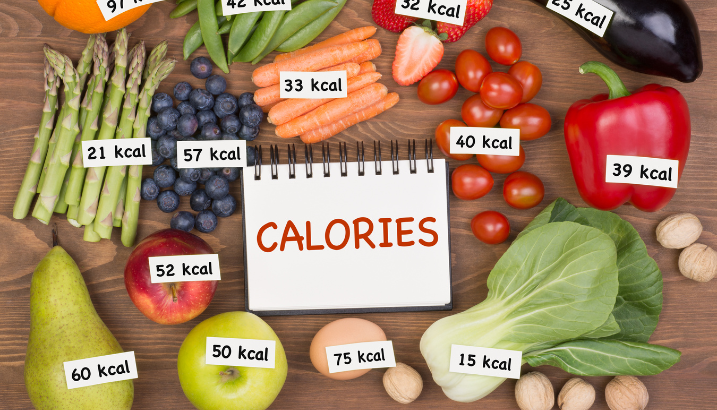Top Tips for Calculating and Meeting Your Daily Maintenance Calories
Understanding and meeting your daily maintenance calories is essential for maintaining a healthy weight and achieving your fitness goals. By accurately calculating your daily maintenance calories and making informed choices about your macronutrient intake, you can ensure that you are fueling your body properly. In this article, we will explore the concept of daily maintenance calories, how to calculate them using the Harris-Benedict Equation, and how to adjust for activity level. We will also discuss the importance of choosing the right macronutrient ratio and tracking your caloric intake. By following these top tips, you can optimize your nutrition and reach your desired health and fitness outcomes.
Key Takeaways
- Understanding your daily maintenance calories is crucial for managing your weight.
- Factors such as age, gender, weight, height, and activity level affect your daily maintenance calories.
- The Harris-Benedict Equation is a commonly used method to calculate daily maintenance calories.
- Adjusting for activity level helps you account for calories burned through exercise.
- Choosing the right macronutrient ratio is important for meeting your daily maintenance calories.
Understanding Daily Maintenance Calories

What are Daily Maintenance Calories?
Daily maintenance calories refer to the amount of energy your body needs to maintain its current weight. It is the number of calories you need to consume in a day to neither gain nor lose weight. To calculate your daily maintenance calories, you need to consider factors such as your age, gender, height, weight, and activity level.
Factors Affecting Daily Maintenance Calories
Several factors can affect your daily maintenance calories. One important factor to consider is your activity level. The more active you are, the higher your daily maintenance calories will be. Another factor is your age. As you get older, your metabolism tends to slow down, which can decrease your daily maintenance calories. Additionally, your body composition plays a role. Muscle mass burns more calories than fat, so having more muscle can increase your daily maintenance calories. Lastly, a well-rounded nutrition is essential for maintaining a healthy weight and meeting your daily maintenance calories.
Calculating Daily Maintenance Calories

Using the Harris-Benedict Equation
The Harris-Benedict Equation is a widely used formula for estimating daily maintenance calories. It takes into account factors such as age, gender, weight, and height to provide an estimate of the number of calories needed to maintain your current weight. This equation is a helpful tool for individuals looking to manage their caloric intake and achieve their health and fitness goals.
Adjusting for Activity Level
When calculating your daily maintenance calories, it's important to take into account your activity level. This is because the amount of calories you burn throughout the day can vary depending on how active you are. To adjust for activity level, you can use the Harris-Benedict equation as a starting point and then make adjustments based on your activity level. This will give you a more accurate estimate of your daily maintenance calories.
Meeting Your Daily Maintenance Calories

Choosing the Right Macronutrient Ratio
When it comes to choosing the right macronutrient ratio for your daily maintenance calories, it's important to consider your individual goals and preferences. Macronutrients, which include carbohydrates, proteins, and fats, play a crucial role in providing energy and supporting various bodily functions. Finding the optimal balance of these macronutrients can help you achieve your desired results. Here are some key points to keep in mind:
Tracking Your Caloric Intake
Tracking your caloric intake is an essential step in managing your daily maintenance calories. By keeping a record of the food you consume, you can gain valuable insights into your eating habits and make informed decisions about your diet. It allows you to identify any patterns or areas where you may need to make adjustments. Additionally, tracking your caloric intake can help you stay accountable and motivated on your journey towards meeting your health and fitness goals.
Meeting Your Daily Maintenance Calories is an essential aspect of maintaining a healthy lifestyle. At Nutrioscale, we understand the importance of tracking your calorie intake accurately. Our smart kitchen scale uses AI technology to automatically recognize and record the food you weigh, making it effortless to track your calories. With Nutrioscale, you can easily stay on top of your daily maintenance calories and achieve your health goals. Visit our website today to learn more about how Nutrioscale can help you on your journey to a healthier you.
Conclusion
In conclusion, understanding and accurately calculating your daily maintenance calories is crucial for achieving your health and fitness goals. By considering factors such as age, gender, weight, height, and activity level, you can determine the number of calories your body needs to maintain its current weight. Meeting your daily maintenance calories requires choosing the right macronutrient ratio and tracking your caloric intake. Remember to consult with a healthcare professional or registered dietitian for personalized advice and guidance. With the knowledge and tools to calculate and meet your daily maintenance calories, you can take control of your nutrition and optimize your overall well-being.
Frequently Asked Questions
What are Daily Maintenance Calories?
Daily Maintenance Calories are the number of calories required to maintain your current weight based on your activity level and metabolism.
How do I calculate my Daily Maintenance Calories?
You can calculate your Daily Maintenance Calories by using the Harris-Benedict Equation and adjusting for your activity level.
What is the Harris-Benedict Equation?
The Harris-Benedict Equation is a formula used to estimate the number of calories your body needs to maintain your current weight.
How do I adjust for my activity level?
To adjust for your activity level, you can multiply your Daily Maintenance Calories by a specific activity factor.
What is the recommended macronutrient ratio?
The recommended macronutrient ratio is the proportion of carbohydrates, proteins, and fats in your daily caloric intake.
How can I track my caloric intake?
You can track your caloric intake by using a food diary or a mobile app that allows you to log your meals and calculate the calories consumed.
